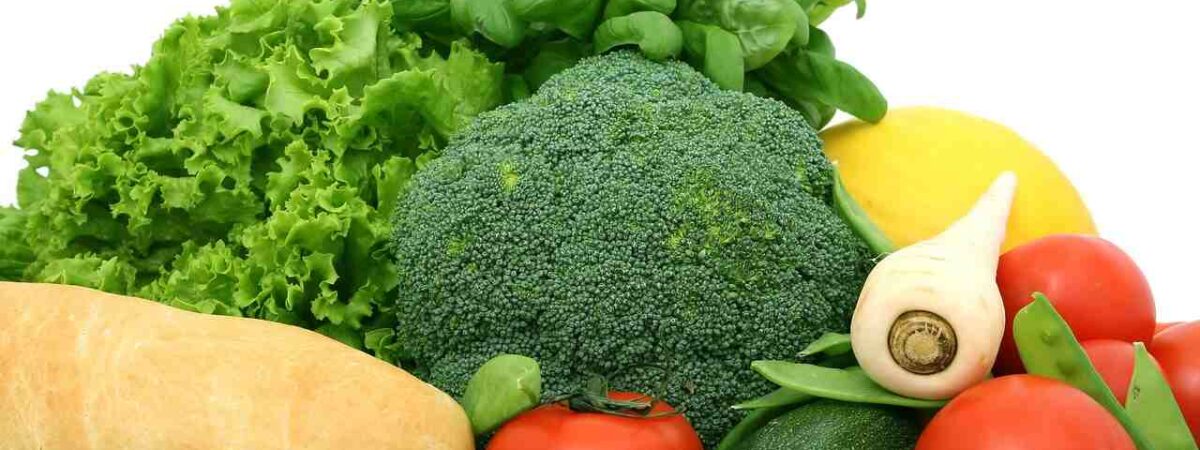Do you want to grow some vegetables in your fall garden? Why, numerous vegetables can take advantage of that still-warm soil and thrive in cooler climates, especially those hardy heroes!
Some fall vegetables even taste better with a nip of frost. Just like the summer garden gets in full swing in summer, it’s time to start thinking about fall as it just starts appearing.
Discover the must-grow vegetables to sow this autumn in your fall garden to keep your garden cropping for longer. Below is a list of the top 7 vegetables that you can grow in mid to late summer for a fall harvest.
Best 7 vegetables to grow in a fall garden
Brocolli

Broccoli, like many other cold crops, thrives best in cool weather in your fall garden. Fall planting of broccoli has two biggest advantages over spring planting. First, although these established broccoli plants can tolerate frost, tender seedlings of broccoli are not as hardy and sometimes early spring frosts can shock or even kill them.
Apart from that, since the florets of broccoli are flower buds, they will open more slowly in cooler weather, which gives you more time to harvest.
But while you are growing always keep in mind that broccoli takes several months to mature, so it is recommended to transplant a quick-grower variety, like Waltham, specifically in mid-to-late summer for a timely fall harvest.
Kale
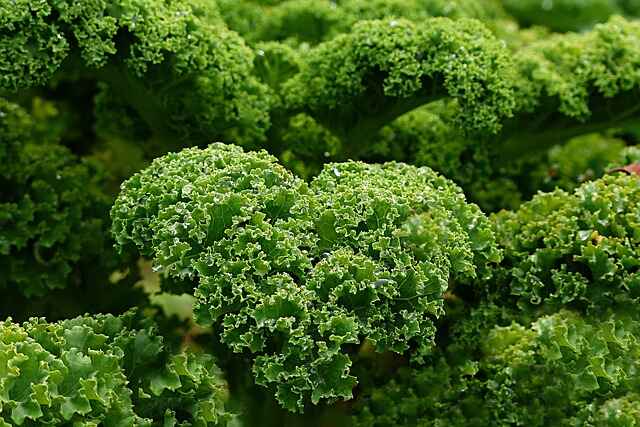
Just like broccoli, Kale is probably one of the easiest cold crops to grow in your fall garden. The seeds of kale generally germinate in warmer or cooler soil and this plant is specifically developed for its leaves, so you may not need to worry about a head forming or the flowers bolting.
The biggest advantage of growing kale plants in the fall garden is the magic that happens to so many vegetables which are grown in cool weather or hit by a light frost. The leaves of the plant will still have a great texture and flavor that will sweeten and deepen your dish.
It is recommended to start planting your seeds for fall harvesting from mid-to-late summer or transplant in late summer.
Lettuce
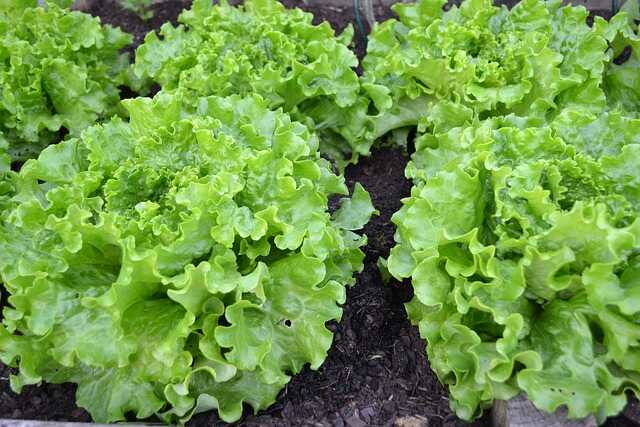
Although lettuce can be planted pretty much well in all the seasons, most varieties of lettuce generally take less than 50 days to mature. So you can start planting your lettuce seed in the fall garden From mid-August and you will have a succession plant in the fall months.
The lettuce plants may start growing more slowly than in the spring for the shorter duration of days and lower temperatures, but the flavor tends to be sweeter and crisper.
As lettuce plants have shallow roots, they may require some protection to your plant against frost.
So If you are planning to plant your fall lettuce in pots, it’s very easy to move your plant indoors to protect it from freezing temperature conditions. Otherwise, you can cover your plant with burlap or another netting if frost is expected.
cauliflower
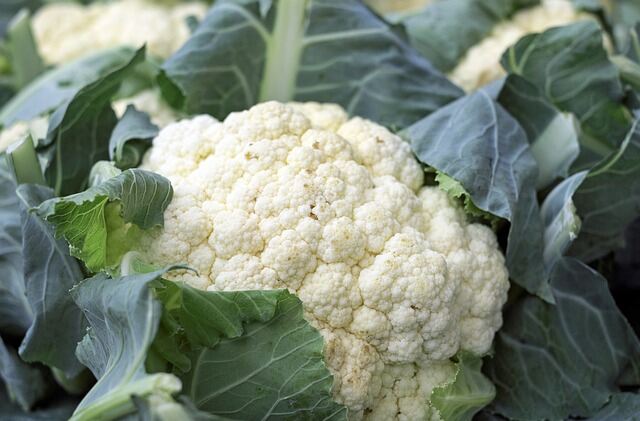
Fall is typically the best time to grow cauliflower rather than growing it in the spring, as the cool climate after fall will keep their heads tight and more tender.
Cauliflower is a slow grower vegetable plant that often takes between two and three months to grow and mature depending on its variety. But always keep in mind that cauliflower can only handle a mild frost, so you need to plant your Cauliflower in time for a mid-fall harvest in your fall garden.
You can pluck your cauliflower from your garden when its head reaches the desired size and its buds are still tight.
Brussel sprouts

Brussels sprouts or scientifically termed the brassica oleracea var. gemmifer are just like their other close cousins’ cauliflower and broccoli, which have a bad reputation for being a little bit picky in their growing conditions.
They just require the correct temperatures to thrive well and for the best results. The recommended temperature of Brussels sprouts performs lies between 45 and 75°F. They can also tolerate a few days of freezing temperatures and love good frost, which enhances their flavor.
Basically in the northern parts of the US, gardeners plant a standard variety of Brussels sprouts with about 105 days to maturity generally from mid-to-late June and these crops are ready to go by Thanksgiving in November.
Canadian people want to hit their Thanksgiving in October and thus they look for 85-day fast-growing varieties. These are also different excellent choices for those in the southern US that may need to wait from late August or early September before planting.
You may need to explore different varieties of these plants before planting, such as these from Burpee, to find the best cultivar among them that fits in with the specific climate of your area or long-range weather outlook each year for the best harvest.
Carrots
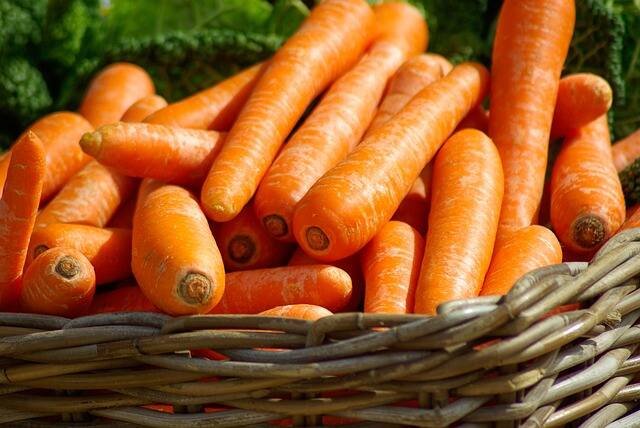
Carrots or scientifically termed the caucus Carota var. sativus shows the symbol of hearty autumn stews and roasted root veggie medleys. If you plan, you may get a second round of carrots in your fall garden for a harvest in the fall.
It is suggested to plant carrots during the late summer heat. If you do so, they will shoot up fast and start growing sweet, thick, and tall carrots throughout the fall. These plants can even survive a few light touches of frost, and the roots of the plant are generally still edible even after the greens have died back.
You can direct sow your plant about eight to 12 weeks before the first expected frost, and thin to three inches apart from each other when the tops are a few inches tall.
In warmer regions along with mild winters, these carrots can be overwintered with a thick eight-inch layer of mulch that can be continually harvested into the spring.
If you are looking for the sweetest variety that is also quick to mature, you can go for the tender sweet cultivar that makes a great choice for your fall garden.
Radish
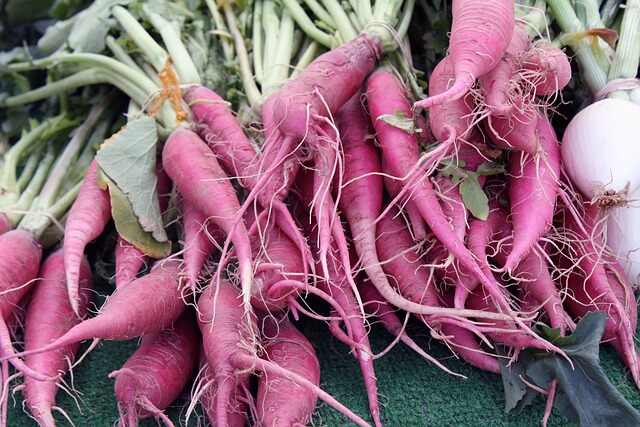
The radishes Or scientifically named the saphanus sativus are a quick-growing crop that can be planted just four to six weeks before the first fall frost. Another winter variety can also be planted which is slower growing, attains several pounds in size, and will last in the garden well after the first frost.
It is suggested to plant winter radishes in early or midsummer and observe them increase in size and flavor as the weather starts to cool. You can also add a layer of mulch around your plants to keep them cool and prevent weeds.
Radishes are great vegetables that can be added to salads, stir-fries, and ferments. You can also combine your radish with cabbage for an added kick to your kraut!
Conclusion
Fall is one of the best times of the year! As the air starts becoming crisp and fresh, gardeners find themself reenergized and geared up for the second round of gardening.
Growing crops in the fall are becoming a fantastic way to continue to bask in the fall garden magic for much longer each year.
There are so many delightful vegetables that grow well in a fall garden. So grow them in your garden and have the taste of these homegrown veggies in winter.
You may also like to read

